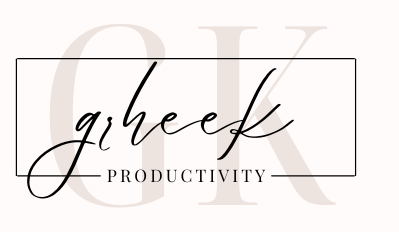In today’s fast-paced business environment, improving productivity in the workplace is crucial for maintaining a competitive edge. Employee productivity not only impacts individual performance but also the overall success of the organization. In this blog post, we will explore practical strategies to improve efficiency and effectiveness at work, methods to increase employee motivation, and the most effective time management techniques to help your team thrive.
Understanding Productivity in the Workplace
Before diving into strategies, it’s essential to understand what productivity in the workplace entails. Productivity refers to the efficiency with which employees complete their tasks and achieve their goals. It is influenced by various factors, including time management, work environment, and motivation levels.
Methods to Improve Efficiency and Effectiveness at Work
1. Implement Clear Goals and Expectations
Setting clear goals and expectations is fundamental for improving productivity. Employees need to understand their objectives and how their roles contribute to the organization’s success. Regularly updating and communicating these goals ensures that everyone is aligned and focused on achieving them.
Example: If your team is working on a marketing campaign, outline specific milestones such as research completion, content creation deadlines, and review dates. This clarity helps employees stay organized and meet deadlines effectively.
2. Provide Adequate Training and Resources
To improve work efficiency and increase employee motivation, invest in training programs and provide the necessary resources. Well-trained employees are more confident and capable, leading to higher productivity. Regular training sessions and access to up-to-date tools and technologies can significantly boost performance.
Example: Offer workshops on the latest software or provide access to online courses that enhance employees’ skills relevant to their roles. This not only improves efficiency but also demonstrates your commitment to their professional growth.
Your Source for Productivity Insights and Inspiration
3. Encourage Effective Time Management
Methods of managing time effectively are crucial for improving productivity. Encourage employees to use time management techniques such as prioritizing tasks, using to-do lists, and setting deadlines. Tools like time-tracking apps and project management software can also aid in managing time more effectively.
Example: Implement the Pomodoro Technique, where employees work in focused intervals of 25 minutes followed by a 5-minute break. This approach can help maintain concentration and reduce burnout.
4. Foster a Positive Work Environment
A positive work environment is essential for improving efficiency and effectiveness at work. Create a workplace culture that supports collaboration, open communication, and mutual respect. Recognize and celebrate achievements to boost morale and motivation.
Example: Organize team-building activities and provide a comfortable workspace with necessary amenities. A happy and engaged workforce is more likely to be productive and committed.
5. Implement Flexible Work Arrangements
Flexible work arrangements, such as remote work or flexible hours, can significantly increase employee motivation and productivity. Allowing employees to choose when and where they work can lead to better work-life balance and enhanced focus.
Example: Offer options for telecommuting or flexible hours to accommodate different working styles. Employees who have the flexibility to work at their peak productivity times are often more efficient.
6. Utilize Technology and Automation
Leveraging technology and automation can greatly improve work efficiency. Implement tools that automate repetitive tasks and streamline workflows. This reduces the time spent on mundane activities and allows employees to focus on more strategic tasks.
Example: Use project management software like Asana or Trello to track project progress and assign tasks. Automation tools can handle routine tasks such as data entry and email responses, freeing up time for more critical work.
Most Effective Time Management Techniques
1. The Eisenhower Matrix
The Eisenhower Matrix helps prioritize tasks by urgency and importance. Divide tasks into four categories: urgent and important, important but not urgent, urgent but not important, and neither urgent nor important. Focus on high-priority tasks to maximize productivity.
Example: If you have a deadline for a client proposal and a routine meeting, prioritize the proposal first as it’s both urgent and important, while the meeting can be scheduled later.
2. Time Blocking
Time blocking involves scheduling specific blocks of time for different tasks or activities. This technique helps manage time more effectively by reducing distractions and ensuring that dedicated time is set aside for important work.
Example: Allocate 30 minutes in the morning for focused work on a project, followed by a 15-minute break, and then an hour for meetings. This structured approach helps maintain productivity throughout the day.
3. The 80/20 Rule (Pareto Principle)
The 80/20 Rule suggests that 80% of results come from 20% of efforts. Identify the tasks or activities that yield the most significant results and focus on them. This technique helps prioritize high-impact work and improve overall productivity.
Example: If you find that customer feedback sessions generate valuable insights, allocate more time to these sessions and reduce time spent on less impactful activities.
Conclusion
Improving employee productivity in the workplace involves a multifaceted approach. By setting clear goals, providing training, encouraging effective time management, fostering a positive environment, implementing flexible work arrangements, and leveraging technology, you can enhance efficiency and effectiveness. Utilizing the most effective time management techniques and focusing on improving work efficiency will lead to a more motivated and productive workforce.
Adopting these strategies not only boosts individual performance but also contributes to the overall success of your organization. Start implementing these methods today and watch your workplace productivity soar!
